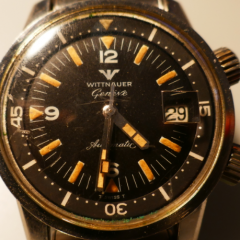Waltham Stopwatch Disassembly Help
-
Recently Browsing
- No registered users viewing this page.
-
Topics
-
Posts
-
Any other thoughts on how I can get a replacement coil? Any “hidden” or unknown physical shops (in Australia or elsewhere) that might have them in stock (but not always online)?
-
I discovered this last night when I printed my model, I'll try and tweak the design a little and re-post here
-
That could work - two blunt pressure points would spread out the force required in order to reduce damage, and two small pins should fit slightly angled through the inner coil of the spring. I was thinking about this while working on other chores and had a crazy thought when I saw a can of expanding rigid sprayable foam, but who'd want to have to clean out the barrel and spring after that?
-
That's very observant of you, Nev & that the 4th wheel is from another movement & has been dished to fit does seem a more likely explanation. Thanks for the education re calculating the rate & spring frequency. In the meantime, spurred by your earlier comnent, I risked a further tinker with the balance spring, cleaning it, fully un-kinking the last few cms (I'd been worried about breaking it first time round) & pinning it at the very end. The clock now seems to be running slow when the regulator is in that position so some progress at last.....Many thanks, once again!
-
By rjenkinsgb · Posted
Snap! I recently finished my Gruen 510 movement - though the case for mine is in a rather sad state; I'm going to try re-plating it (in nickel, it's not a gold one). Re. the screws, I got a few of the one gram mixed batches from ebay. I've only needed a couple of screws for things so far, both rare, minuscule types - but both in the mix, after enough time sorting through them! The ones such as normal bridge screws are quite common in those lots.
-








Recommended Posts
Join the conversation
You can post now and register later. If you have an account, sign in now to post with your account.
Note: Your post will require moderator approval before it will be visible.